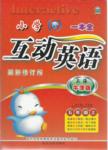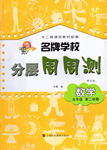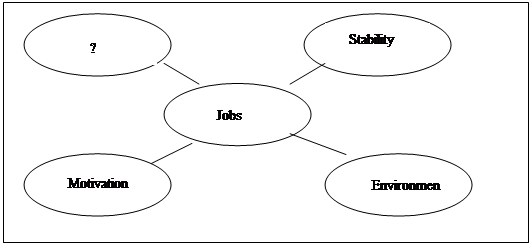题目内容
Most people believe they don’t have much imagination. They are1 . Everyone has imagination, but most of us, once we become adults, forget how to2it. Creativity isn’t always3with great works of art or ideas. People at work and in their free time4 think of creative ways to solve problems. Maybe you have a goal to achieve, a tricky question to answer or you just want to expand your mind! Here are three techniques to help you.
Making connections. This technique involves taking5ideas and trying to find links between them. First, think about the problem you have to solve or the job you need to do. Then find an image, word, idea or object, for example, a candle. Write down all the ideas/words6with candles: light, fire, matches, wax, night, silence, etc. Think of as many as you can. The next stage is to relate the7to the job you have to do. So imagine you want to buy a friend an original8; you could buy him tickets to match or take him out for the night.
NO limits! Imagine that normal limitations don’t9. You have as much time /space / money, etc. as you want. Think about your goal and the new10. If your goal is to learn to ski,11, you can now practise skiing every day of your life (because you have the time and the money). Now12this to reality.Maybe you can practise skiing every day in December, or every Monday in January.
Be someone else! Look at the situation from a13point of view. Good businessmen use this technique in trade, and so do writers. Fiction writers often imagine they are the14 in their books. They ask questions: What does this character want? Why can’t she get it? What changes must she make to get what she wants? If your goal involves other people, put yourself in their15. The best fishermen think like fish!
- 1.
- A.wrong
- B.unbelievable
- C.reasonable
- D.realistic
- A.
- 2.
- A.put up with
- B.catch up with
- C.make use of
- D.keep track of
- A.
- 3.
- A.equipped
- B.compared
- C.covered
- D.connected
- A.
- 4.
- A.skillfully
- B.routinely
- C.vividly
- D.deeply
- A.
- 5.
- A.familiar
- B.unrelated
- C.creative
- D.imaginary
- A.
- 6.
- A.presented
- B.marked
- C.lit
- D.associated
- A.
- 7.
- A.ideas
- B.ambitions
- C.achievement
- D.technique
- A.
- 8.
- A.experience
- B.service
- C.present
- D.object
- A.
- 9.
- A.work
- B.last
- C.exist
- D.change
- A.
- 10.
- A.possibilities
- B.limitations
- C.tendency
- D.practice
- A.
- 11.
- A.in fact
- B.in particular
- C.as a whole
- D.for example
- A.
- 12.
- A.devote
- B.adapt
- C.lead
- D.keep
- A.
- 13.
- A.private
- B.global
- C.different
- D.practical
- A.
- 14.
- A.features
- B.themes
- C.creatures
- D.characters
- A.
- 15.
- A.positions
- B.dreams
- C.images
- D.directions
- A.
文章论述了如何让自己有创造性,并给出了3个方法。
1.上下文串联。根据下文的每个人都有想象力可知以前的看法是错误的。
2.短语辨析。A忍受;B追上,赶上;C利用;D记录;句意:一旦长大了以后,人们就会忘记了如何利用想象力。
3.固定词组。Be connected with与…有联系;这里是指并不总是与伟大的作品思想联系在一起的,很多微小的事情也经常与创造力有关。
4.副词辨析。A有技巧的;B经常的;C生动地;D深入地;解析同上。
5.形容词辨析。A熟悉的;B没有联系的;C创造性的;D想象的;这里是指把那些没有联系的事物联系在一起。
6.形容词辨析。根据句意可知是写下一些与蜡烛有关的词或者想法。
7.上下文串联。上文16空之前提及了idea。
8.名词辨析。A经历,经验;B服务;C礼物;D物体;这里是指给朋友买一个礼物。
9.上下文串联。根据上文的no limits可知是指没有限制的,这里指限制是不存在的。
10.名词辨析。A可能性;B限制;C趋势;D做法,惯例;指考虑你的目标和新的可能性。
11.介词辨析。A实际上;B尤其;C总的说来;D例如。根据上下文可知这里是举例说明。
12.动词辨析。Adapt…to…使…适合…
13.形容词辨析。根据本段内容可知是指换位思考,从另外一个不同的角度考虑问题。
14.名词辨析。A特征,特色;B主题,主旨;C生物;D角色,性格。这里是指科幻小说的作者经常把自己当成是作品中的主角。
15.名词辨析。A位置;B梦想;C形象;D方向;这里是指把自己放在别人的位置上。

 互动英语系列答案
互动英语系列答案 名牌学校分层周周测系列答案
名牌学校分层周周测系列答案Farming was once the chief way of life in nearly every country. People cannot live without food, and nearly all their food comes from crops and animals raised on farms. Not many people farm for a living any more, but farming remains the most important work in the world.
Before the nineteenth century, the typical American family lived on a small farm. They raised pigs, cattle, sheep, chickens, and planted corn, frui ts, garden vegetables, and wheat. Everyone worked long and hard, but the results were often poor. Families barely harvested enough food for themselves. This situation began to change during the last half of the 1800's and it changed remarkably(明显地) in the next century.
ts, garden vegetables, and wheat. Everyone worked long and hard, but the results were often poor. Families barely harvested enough food for themselves. This situation began to change during the last half of the 1800's and it changed remarkably(明显地) in the next century.
Scientific methods and labor-saving machinery have made farming increasingly productive. The development of improved plant varieties and fertilizers has helped double and even triple the production of some major crops. More scientific animal care and animal raising have helped increase the amount of meat and products that animals produce. At the same time, the use of tractors and other modern farm equipment has sharply reduced the need for farm labor.
As farming has become less important as a way of life in the United States, it has become more important as a source which offers materials to industry. Today's successful farmers are experts not just in agriculture but also in accounting, marketing, and finance. Farms that are not run in a similar way have great difficulty surviving.
not run in a similar way have great difficulty surviving.
【小题1】 We are told in the first paragraph about ____.
| A.the history of farming | B.the importance of farming |
| C.the development of farming | D.the changes of farming |
| A.Farmers didn’t work hard on their farms. |
| B.Farmers used tractors to help them. |
| C.Farming was the main way of living for most people. |
| D.Farmers could supply materials to industry. |
| A.scientific methods | B.labor- saving machinery |
| C.farmers’ hard work | D.chemical fertilizers |
| A.the advantages of American farming | B.the changes in American farming |
| C.the situation of American farms | D.how rapidly farming has developed |
 it but later found it made you feel very uncomfortable over time? When you select your career, there’s whole lot more to it than assessing your skills and matching them with a particular position. If you ignore your personality, it will hurt you long-term regardless of your skills or the job's pay. There are several areas of your personality that you need to consider to help you find a good job. Here are a few of those main areas:
it but later found it made you feel very uncomfortable over time? When you select your career, there’s whole lot more to it than assessing your skills and matching them with a particular position. If you ignore your personality, it will hurt you long-term regardless of your skills or the job's pay. There are several areas of your personality that you need to consider to help you find a good job. Here are a few of those main areas: 
 right hand, and in many countries and regions in Europe some people still follow this tradition.
right hand, and in many countries and regions in Europe some people still follow this tradition. .You can have an inscription put on the inside the band.
.You can have an inscription put on the inside the band.